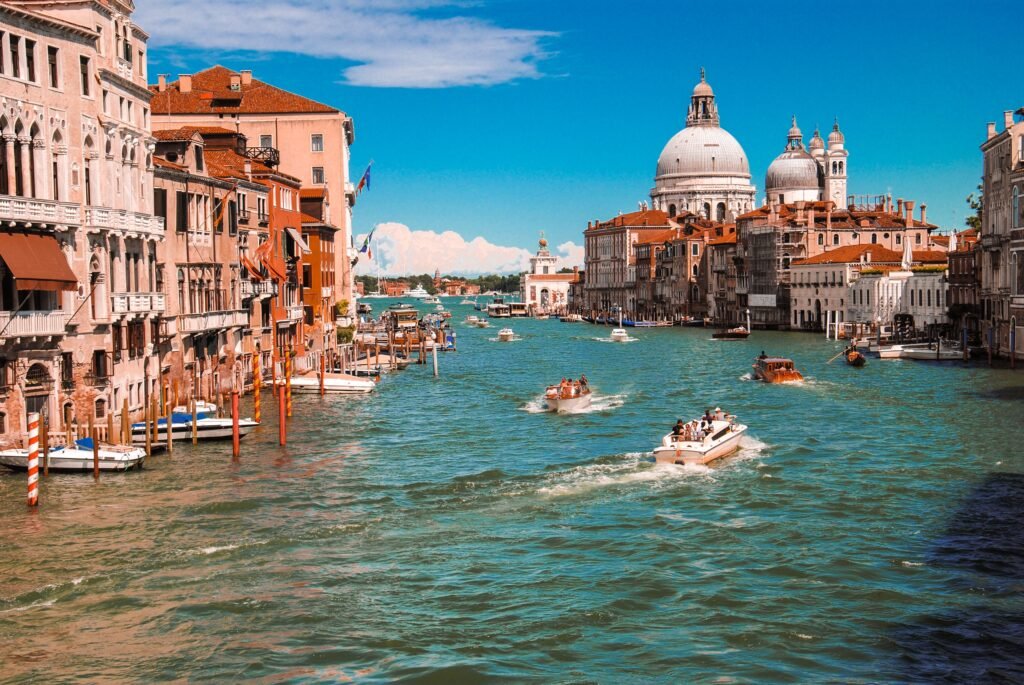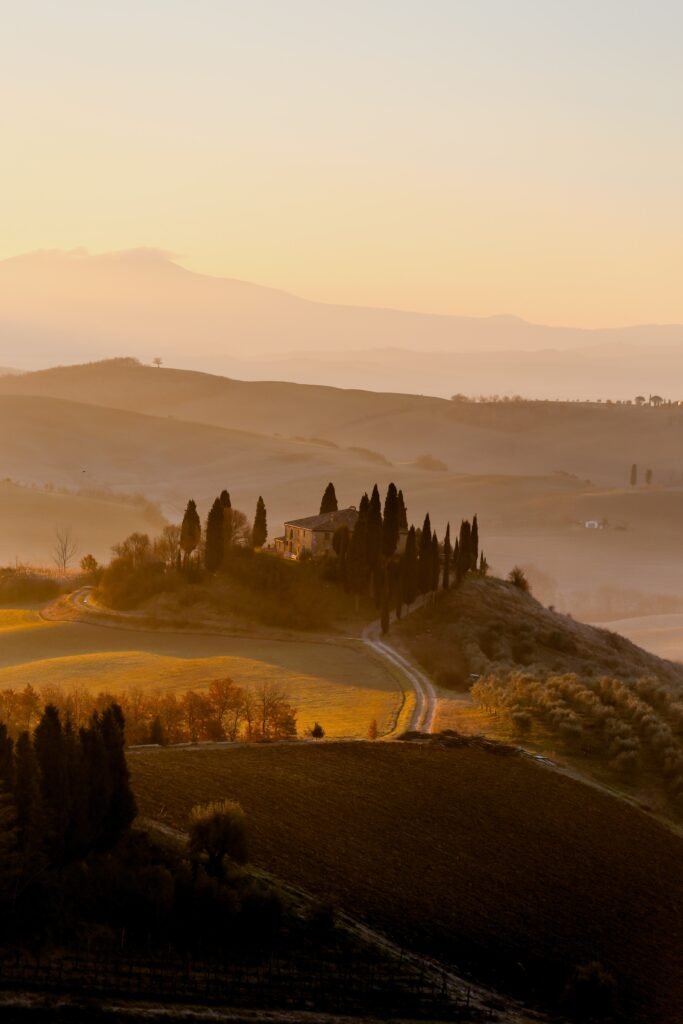In “Verdi’s Rural Connection: A Lifelong Bond with Northern Italy,” Anthony Tommasini embarks on a journey to discover the places that shaped the legendary Italian composer, Giuseppe Verdi, and his music. Tommasini, whose passion for Verdi’s operas began at a young age, explores Roncole, Busseto, Sant’Agata, and Milan to gain a deeper understanding of Verdi’s life and art. From visiting Verdi’s birthplace in Roncole to exploring Casa Barezzi in Busseto, where Verdi lived and gave music lessons to his future wife, Margherita, Tommasini immerses himself in the world that inspired Verdi’s genius. At Villa Verdi in Sant’Agata, he witnesses the farm that Verdi oversaw while creating his timeless operas. Throughout his life, Verdi maintained a profound connection to the rural region of northern Italy, which is exemplified by his final resting place in a marble crypt at Casa di Riposo per Musicisti in Milan.

Verdi’s Early Years
Verdi’s birthplace in Roncole
Giuseppe Verdi, one of the most renowned Italian composers of all time, was born on October 9, 1813, in the small village of Roncole, located in the region of Emilia-Romagna in northern Italy. This humble birthplace, a simple stone house, holds great significance in the history of classical music. It was here that Verdi took his first breaths and embarked on a journey that would forever change the landscape of opera.
Verdi’s musical education with local priests
As a young boy growing up in Roncole, Verdi showed a natural inclination towards music. Recognizing his talent, the local priests took him under their tutelage and provided him with a solid foundation in music theory and performance. These early lessons laid the groundwork for Verdi’s future accomplishments and allowed him to develop a deep understanding of the intricacies of music.
Verdi’s Life in Busseto
Verdi’s residence at Casa Barezzi
At the age of 20, Verdi moved to the nearby town of Busseto, where he resided in Casa Barezzi, the townhouse of his benefactor Antonio Barezzi. This move marked a turning point in Verdi’s life, as it provided him with the opportunity to immerse himself in the world of music and further refine his skills as a composer. The Barezzi household became a center of musical activity, hosting numerous concerts and gatherings that helped Verdi establish his reputation as a talented musician.
Verdi’s music lessons to Margherita
During his time in Busseto, Verdi also gave music lessons to Margherita, the daughter of Antonio Barezzi. Their shared love for music quickly blossomed into a deep and lasting romance, eventually leading to their marriage in 1836. Verdi’s influence on Margherita’s musical development cannot be overstated, and their relationship served as a catalyst for Verdi’s own artistic growth.
Verdi’s early works and their connection to Busseto
It was in Busseto that Verdi composed some of his earliest works, including his first opera, “Oberto, conte di San Bonifacio.” This opera, premiered in 1839, showcased Verdi’s emerging talent and gave the world a glimpse of the genius that was yet to come. The influence of his time in Busseto can be seen in many of Verdi’s subsequent works, as the town and its people left an indelible mark on his artistic sensibilities.

Villa Verdi in Sant’Agata
Verdi’s home for 50 years
After achieving considerable success as a composer, Verdi decided to settle in Sant’Agata, a picturesque village located in the province of Parma. Here, he found solace and serenity in the sprawling Villa Verdi, which would remain his home for the next five decades. Surrounded by lush greenery and breathtaking landscapes, Verdi found inspiration in the tranquility of rural life, allowing him to pour his creativity into his compositions.
The farm overseen by Verdi
In addition to his musical pursuits, Verdi also took on the role of overseeing a farm situated within the grounds of Villa Verdi. This juxtaposition of creative and agricultural endeavors served as a testament to Verdi’s connection to the land and his desire to maintain a grounded existence amidst his growing fame. Through his stewardship of the farm, Verdi found a sense of balance and harmony that permeated his musical compositions.
Verdi’s creative inspiration in rural surroundings
The idyllic surroundings of Villa Verdi played a pivotal role in shaping Verdi’s artistic vision. The beauty of the natural landscape, the sounds of the countryside, and the simplicity of rural life all found their way into Verdi’s compositions, imbuing them with a sense of authenticity and emotional depth. It was in this tranquil setting that Verdi composed some of his most beloved operas, such as “Rigoletto,” “La Traviata,” and “Falstaff,” solidifying his status as a master of the genre.
Verdi’s Love for Northern Italy
Verdi’s deep connection to the region
Throughout his life, Verdi maintained a deep and unwavering love for the region of northern Italy. This affection stemmed from his upbringing in the small villages of Roncole and Busseto, as well as his later experiences in Sant’Agata. Verdi’s compositions often portrayed the struggles, joys, and passions of the people of northern Italy, capturing the essence of their collective spirit and serving as a testament to his unbreakable bond with his homeland.
Northern Italy as a recurring theme in Verdi’s operas
Verdi’s operas are replete with references to the northern Italian landscape, culture, and history. Whether it be the picturesque countryside, the fervor of political uprisings, or the rich tapestry of Italian traditions, Verdi masterfully captured the essence of the region in his compositions. The emotional intensity and heartfelt melodies found in Verdi’s operas reflect his deep understanding of the struggles and triumphs of the people he held dear, showcasing his unparalleled ability to evoke powerful emotions through music.

Verdi’s Final Resting Place
Verdi and Strepponi’s burial in Milan
Upon his death on January 27, 1901, Verdi was buried in Milan alongside his lifelong companion, Giuseppina Strepponi. Their burial took place in a magnificent marble crypt on the grounds of Casa di Riposo per Musicisti, a retirement home for musicians. This final resting place stands as a testament to Verdi’s enduring legacy and his commitment to supporting fellow artists throughout his life.
The Casa di Riposo per Musicisti and Verdi’s involvement
Verdi’s involvement in the establishment of Casa di Riposo per Musicisti, commonly known as the Home for Retired Musicians, was driven by his desire to provide support and care for fellow musicians during their twilight years. Verdi generously donated a substantial portion of his wealth to fund the construction and ongoing maintenance of this institution, ensuring that his fellow artists would have a dignified place to spend their final years. Today, the Casa di Riposo per Musicisti stands as a living testament to Verdi’s compassion and enduring commitment to the musical community.
In conclusion, Giuseppe Verdi’s life and music were deeply entwined with the places that shaped him. From his humble beginnings in Roncole to his formative years in Busseto, and finally to the serenity of Villa Verdi in Sant’Agata, Verdi found inspiration in the landscapes, people, and culture of northern Italy. His compositions echoed the struggles and joys of the region, cementing his place as one of the most influential composers in the history of classical music. Verdi’s compassion and commitment extended beyond his music, as evidenced by his involvement in the Casa di Riposo per Musicisti, ensuring that his legacy would continue to support and uplift fellow musicians long after his passing. Giuseppe Verdi’s life and art serve as a testament to the enduring power of music and its ability to touch the souls of individuals across generations and geographical borders.






